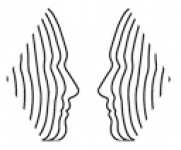
Polkadot System-Chains
Polkadot System & Common Good Chains
Discover Polkadot’s system parachains: enhancing scalability, governance, and interoperability with parallel execution and decentralized applications.

Polkadot System & Common Good Chains
Discover Polkadot’s system parachains: enhancing scalability, governance, and interoperability with parallel execution and decentralized applications.

Common Good
Easy access to Polkadot & Kusama high quality blockspace.
Polkadot & Kusama Appchain






Common Good
Asset Hub (former Stateming) purpose is to facilitate the deployment of assets with significantly lower fees compared to other solutions.
Polkadot & Kusama Appchain






Common Good
The BH will be the gateway between Polkadot and other networks, like Kusama and Ethereum.
Polkadot & Kusama Appchain






Common Good
This parachain serves as a platform for on-chain collectives that cater to the needs of Polkadot.
Polkadot & Kusama Appchain


DAO Tool
Encointer enables communities everywhere to generate their own currency and use it to stimulate the local economy.
Kusama Appchain






Common Good
Polkadot identity chain
Polkadot & Kusama Appchain
Polkadot, a leading blockchain platform renowned for its scalability and interoperability, has introduced a novel approach to enhancing its core protocol features through the use of system parachains. These system parachains, formerly known as “Common Good Parachains,” house essential Polkadot protocol logic in parachains rather than the Relay Chain, leveraging Polkadot’s parallel execution technology to scale itself effectively. This article delves into the concept, functionality, and existing implementations of Polkadot’s system chains.
System parachains are integral to Polkadot’s infrastructure, executing core protocol features without leasing execution cores through economic means such as auctions. Instead, network governance allocates these cores. By shifting core protocol logic from the Relay Chain to parachains, Polkadot optimizes its blockspace, focusing the Relay Chain on its primary function of validating parachains.
System parachains are governed entirely by on-chain governance and do not possess native tokens or separate governance systems apart from DOT and KSM. This centralized governance model ensures streamlined management of upgrades and other critical actions. Notably, a dedicated system parachain for network governance is anticipated.
The Asset Hub, operational on both Polkadot and Kusama networks, serves as an asset portal for the entire ecosystem. It facilitates asset creators, such as stablecoin issuers, in tracking total asset issuance across the Polkadot network, including transfers to other parachains. The Asset Hub supports minting, burning, and managing on-chain assets, with logic executed directly in the chain’s runtime rather than through smart contracts. This direct execution results in significantly lower fees and deposits compared to the Relay Chain, making the Asset Hub an efficient platform for handling DOT balances and on-chain assets.
Additionally, the Asset Hub supports non-fungible tokens (NFTs) through the Uniques pallet and the new nfts pallet, enhancing its versatility for various asset types.
Encointer, registered as a system parachain on Kusama’s network, introduces a blockchain platform focused on self-sovereign identity and global universal basic income (UBI). Utilizing a novel Proof of Personhood (PoP) system, Encointer combats Sybil attacks and fosters unique identity verification through physical key-signing ceremonies. Participants attend randomized local meetings as part of a global ceremony, using the Encointer wallet app to manage local community currencies.
Encointer’s framework allows any group of real people to create and distribute digital community tokens, providing financial inclusivity in Web3. The protocol’s mechanisms also ensure user privacy while enabling digital democracy and community governance. Other chains can adopt Encointer’s unique identity system for Sybil defense, token airdrops, or faucets.
The Polkadot Collectives parachain, exclusive to the Polkadot network, hosts on-chain collectives serving the network’s governance and stewardship. Key collectives include the Polkadot Alliance and the Polkadot Technical Fellowship, both poised to play significant roles in decentralized governance. Networks can act as collectives and participate in cross-network legislative processes, facilitated by bridge hubs.
Bridge hubs are dedicated parachains for bridging Polkadot and Kusama to other networks. Previously, bridge logic resided on the Relay Chain, but with the advent of parachains, a dedicated bridge hub parachain offers isolated execution for bridge operations. This development underscores Polkadot’s commitment to expanding its interoperability through trust-minimized bridges to external networks.
The People Chain represents a significant milestone in Polkadot’s evolution, marking the first migration of functionality from the Relay Chain to a system parachain. This migration involves moving the Identity pallet and its associated functions to the People Chain. Following successful tests on Rococo and Westend, the People Chain is set to deploy on Kusama before migrating to Polkadot.
The migration process will occur in phases, starting with upgrading the Kusama and Polkadot runtimes to Polkadot SDK v1.7.0. Once the necessary upgrades are in place, the Identity pallet calls will be blocked on the Relay Chain, and the People Chain runtime will be created. A snapshot of existing Identity state will form the genesis state of the People Chain.
Subsequent phases will include freeing deposits held on the Relay Chain, allowing users to migrate identities to the People Chain with significantly lower deposits, enhancing accessibility. Once all identities are migrated, the People Chain will fully operationalize the Identity pallet functionality.
Polkadot’s system parachains represent a strategic evolution in blockchain technology, enhancing the network’s scalability, governance, and interoperability. By hosting core protocol features within parachains, Polkadot optimizes its infrastructure, paving the way for more efficient and inclusive decentralized applications. As the ecosystem evolves, system parachains will continue to play a pivotal role in shaping the future of Polkadot and its contributions to the broader blockchain landscape.
Join our Newsletter
By signing up, you will receive emails about DaBlock products and you agree to our terms & conditions and privacy policy.
Submit a profile/project.
Fill out the following form in order to include or modify a profile/project in our lists.
Terms of services & Privacy policy | DaBlock 2024 | All rights reserved